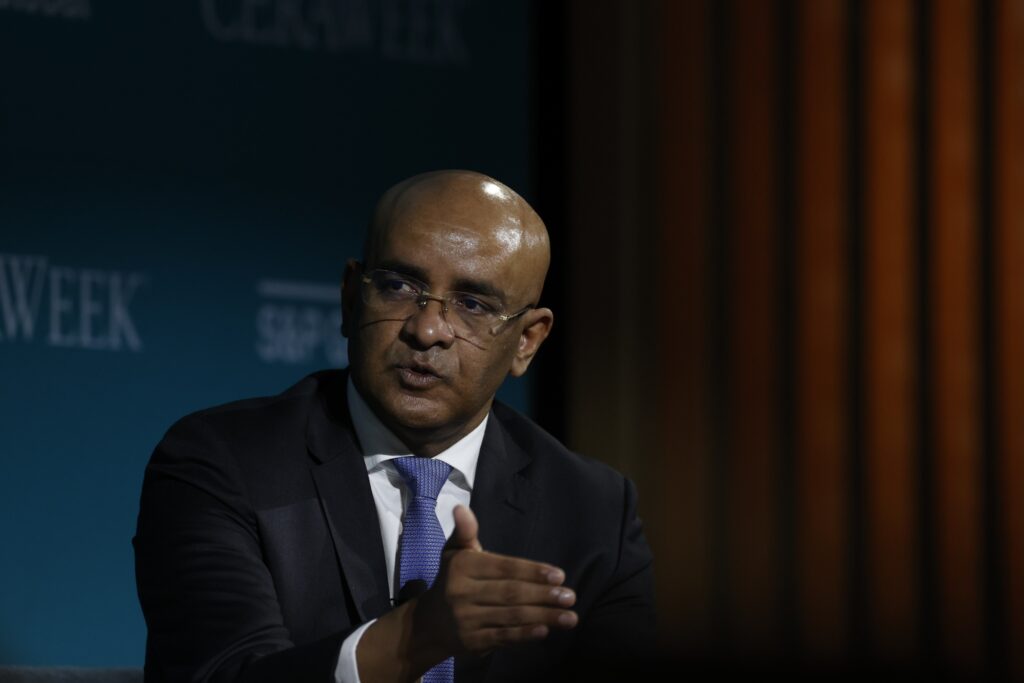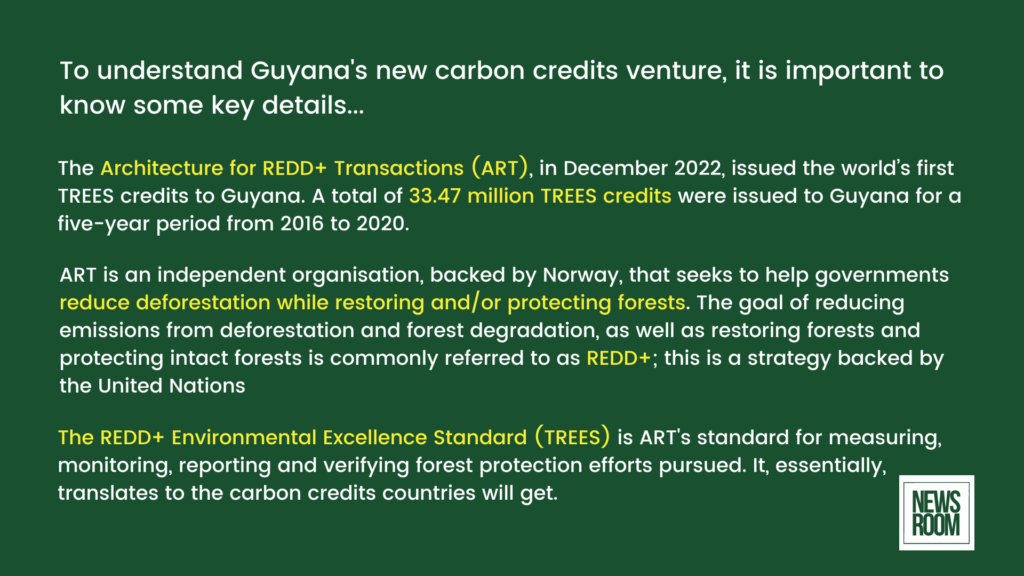Guyana will be represented at the upcoming 28th Conference of the Parties to the UN Framework Convention on Climate Change (COP28) in Dubai and the country won’t just be an ordinary participant in the discussions and negotiations.
This year, Guyana hopes to demonstrate its environmental stewardship and showcase its blueprint for balancing oil and gas production with low-carbon development.
Oil and gas production, many believe, conflicts with low-carbon development. The oil industry is notorious for emitting carbon dioxide and other harmful gases which contribute to global warming and fuel-increasing disasters like rising sea levels and wildfires.
But Guyana believes it is uniquely positioned to earn the money it needs by harnessing its resources, be it oil and gas or its vast forests. The country’s leaders argue that Guyana is already demonstrating how it can balance it all.
“We are one of the few countries that has a Low Carbon Development Strategy (LCDS) and the biggest forest deal in the world. We have robust and good-quality carbon. We have the only international jurisdictional certification for forests,” Vice President Dr Bharrat Jagdeo told reporters on Thursday during his weekly press conference.
And he juxtaposed Guyana’s environmental credentials with its policy for the nascent oil and gas industry.
“We go to COP as an emerging oil producer but one that still supports reduction in fossil fuel subsidies, we go to COP with a call for early disbursements. We believe in new technology that should reduce the carbon footprint of activities in the oil and gas sector,” he noted.
A key focus of Guyana at COP28 is to also gain support for its carbon credits venture that is helping it earn money for protecting its roughly 18 million hectares of intact forests that cover about 85% of its landmass.
Carbon credits a key focus
Jagdeo said Guyana will go to COP to get more support for this venture, hoping to get forests part of the compliance market. In August, the country’s President Dr. Irfaan Ali also said Guyana wants higher prices in the voluntary market.
For context, Guyana’s trees store 19.6 gigatonnes of carbon dioxide, a gas which traps heat. If trees are cut down, the carbon would be released into the atmosphere, worsening climate change and leading to extreme weather events such as floods, droughts and wildfires.
While it has protected these trees for years, Guyana has been lobbying for a global system that pays the country to keep its vast forests intact instead of cutting those down to make way for agricultural activities or more mining projects, for example.
Norway was the first to buy in, signing a deal for over USS$200 million, once deforestation rates remained intact. This deal happened more than a decade ago when Jagdeo was President and the LCDS was first publicised.
Now, the country has updated the LCDS to focus on low-carbon development amid its new economic pursuits. There is now a focus on water management and marine resources in the updated plan, too.
As part of that strategy, Guyana signed a massive US $750 million deal with the Hess Corporation, one of the oil companies producing oil in the Stabroek Block offshore Guyana, for one-third of all of its carbon credits. The deal was signed last December.
Those carbon credits are a kind of tradeable permit or certificate that represents the removal of a certain amount of carbon dioxide from the environment. Guyana became the first country to get special, jurisdictional carbon credits issued to it by the Architecture for REDD+ Transactions (ART).
It isn’t just that the country wants more for the sake of keeping its forests intact.
Guyana also argues that it is grappling with increasing climate disasters, like sea level rise and flooding, so it needs more money to do things like build sea defences and improve irrigation.
At another press conference, Dr. Jagdeo explained that Guyana is pursuing this carbon credits venture because funds promised at these COPs just aren’t coming fast enough or in big enough amounts to help countries fund climate adaptation or mitigation.
Climate finance is one of the biggest discussions at every COP.
While it is well-known that countries must cut down their use of fossil fuels like natural gas and diesel and transition towards more renewable energy sources like solar and wind power, there just isn’t enough money for developing countries to do so.
Further, developing countries like those in the Caribbean, Africa and the Pacific also face frequent, harsh climate disasters so they argue that they must get money to protect against those disasters. This is why they’ve been lobbying for a ‘loss and damage’ fund and this year, many hope this can be operationalised.
But there are ‘COPs’ every year and many of the same issues are discussed quite frequently with very slow progress. Jagdeo, for one, isn’t optimistic about getting climate funds promised by developed nations.
That’s why, he said, Guyana is going to “push” heavily for support for its carbon credits venture and wider, for its low carbon development strategy.
This story was originally published by the News Room, with the support of Climate Tracker’s COP28 Climate Justice Reporting Fellowship.


